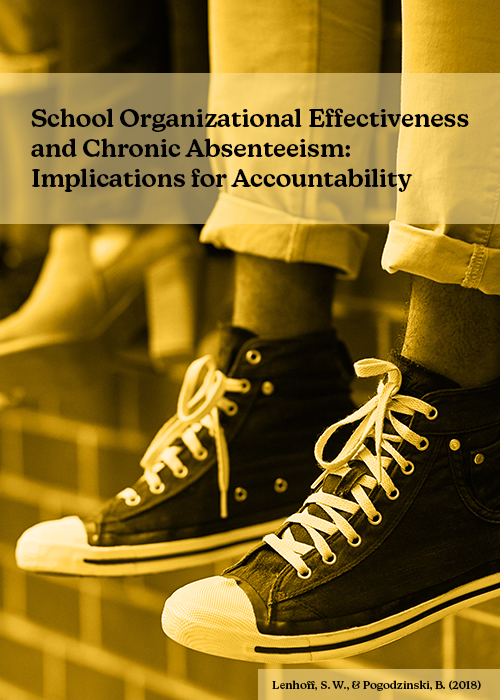Research Type: Academic Paper
Chronic Absenteeism in the School-Prison Nexus
This qualitative case study examines how attendance management practices are designed and implemented in a large urban school district and explores the empirical and conceptual relationship between student behavior and attendance management within the “school-prison nexus.” We use interviews with parents, high school students, and staff charged with reducing chronic absenteeism to demonstrate how managing students’ attendance through intervention plans, student monitoring, and threats of legal action have implicit and explicit parallels to the management of student behavior in schools and could be considered a potential mechanism through which the school-prison nexus functions. We conclude with implications for schools and districts as they seek ways to reduce chronic absenteeism without contributing to the over-surveillance and punishment of high school youth.
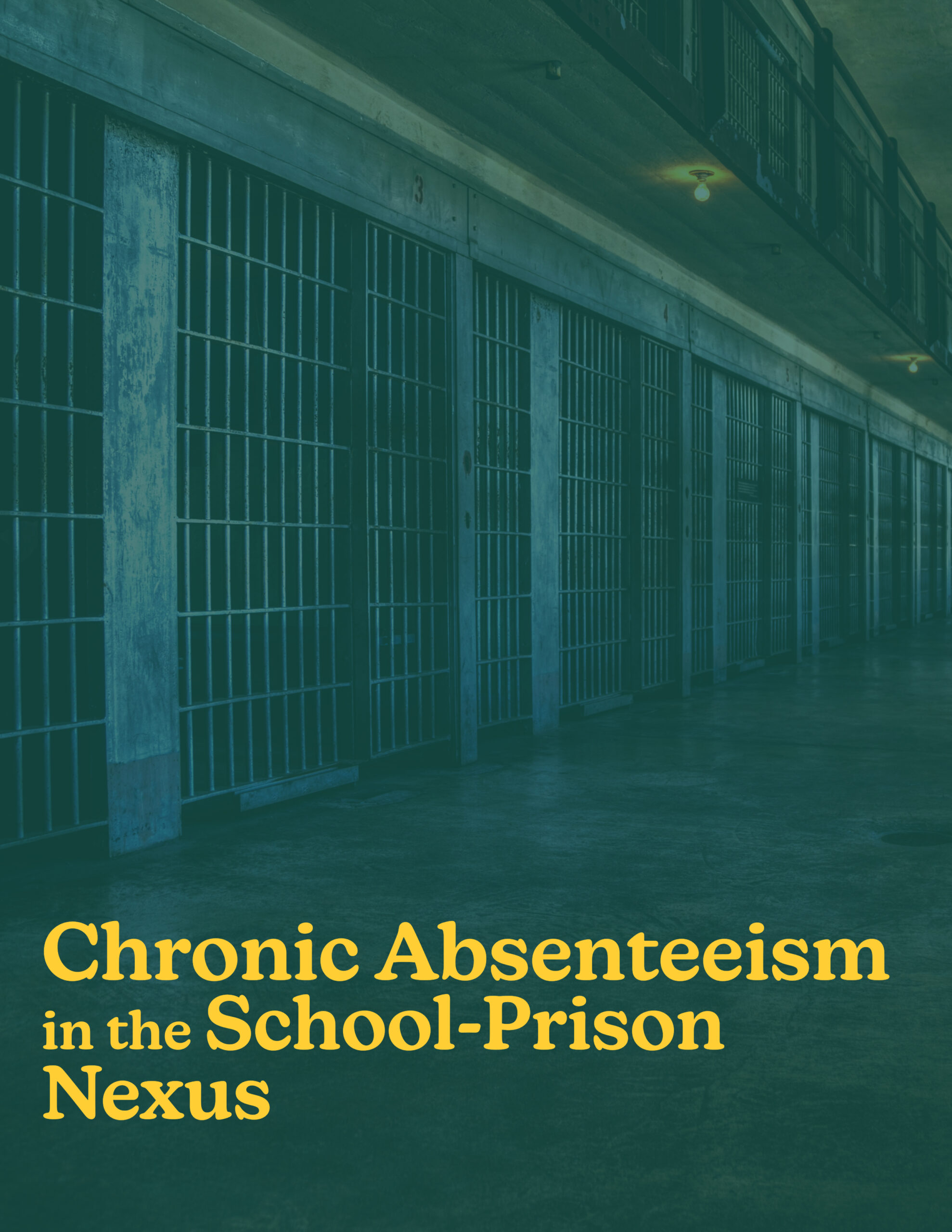
Chronic Absenteeism in the School-Prison Nexus
This qualitative case study examines how attendance management practices are designed and implemented in a large urban school district and explores the empirical and conceptual relationship between student behavior and attendance management within the “school-prison nexus.” We use interviews with parents, high school students, and staff charged with reducing chronic absenteeism to demonstrate how managing students’ attendance through intervention plans, student monitoring, and threats of legal action have implicit and explicit parallels to the management of student behavior in schools and could be considered a potential mechanism through which the school-prison nexus functions. We conclude with implications for schools and districts as they seek ways to reduce chronic absenteeism without contributing to the over-surveillance and punishment of high school youth.

Beyond the Bus: Reconceptualizing School Transportation for Mobility Justice
This essay combines an ecological perspective with a mobility justice theoretical framework to reconceptualize the relationship between school transportation and educational access. Authors Sarah Winchell Lenhoff, Jeremy Singer, Kimberly Stokes, James Bear Mahowald, and Sahar Khawaja document the problem of “getting to school ”that is at the intersection of students’ family, community, and social contexts and how it goes beyond whether there is a reliable mode of physical transportation. Bringing together a historical analysis of the policy landscapeand interview data from parents and students in Detroit, they find that school transportation problems reflect the unequal political, social, and economic context in which families navigate enrollment and attendance. They discuss how policymakers can advance mobility justice in school policy by equitably distributing transportation resources, engaging students and parents as experts in developing and communicating transportation policy, and using institutional power to remedy structural barriers to educational access.
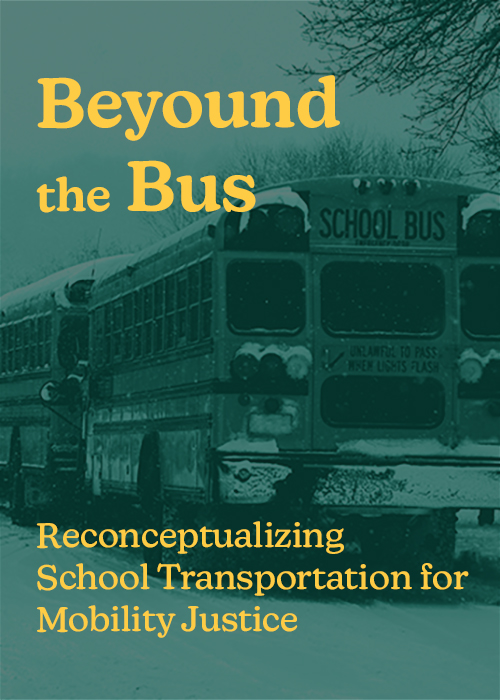
School Transit and Accessing Public School in Detroit
Students in the Detroit Public Community Schools District (DPSCD) have the highest rate of chronic absence (missing 10% or more of school days) among large districts in the United States. Additionally, students in DPSCD are among the poorest students in the country, often lacking access to reliable personal transportation or public transit to facilitate getting to school. Although DPSCD offers school-sponsored transit, only 30% of K-8 students were eligible for such transit in 2018-19. Through the use of multilevel modeling, we sought to identify the association between eligibility for school-sponsored transit and attendance. Our findings indicated that there was a negative association of small magnitude between eligibility for school sponsored transit and school attendance. This counterintuitive finding may highlight the fact that transit eligibility is not sufficient to mediate the negative relationship between student poverty and attendance, and transit eligibility does not guarantee regular use of school-sponsored transit.

Promoting Ecological Approaches to Educational Issues: Evidence from a Partnership around Chronic Absenteeism in Detroit
Many problems that we conceptualize as “educational” have multiple causes that cut across students’ ecosystems. Yet, most education reforms are targeted narrowly at schools, educators, and students. Supporting educators and community leaders in conceptualizing educational problems from an ecological perspective and designing policies in alignment with that conceptualization is critical to improving student outcomes. This study documented the macro-, meso-, and micro-level institutional conditions that shaped how educators and community leaders conceived of the problem of absenteeism in response to research framed ecologically. Our findings highlight the challenges researchers may have in influencing ecosystemic policy solutions, but they also provide insight into potential pathways for doing so through research partnerships.
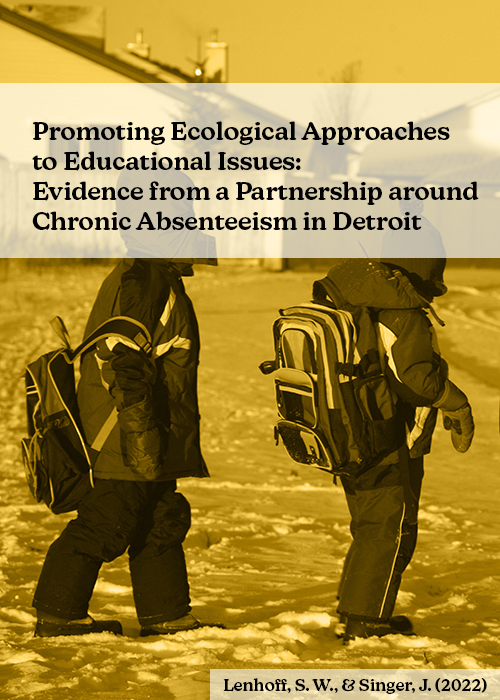
Race, geography, and school choice policy: A critical analysis of Detroit students’ suburban school choices
The purpose of this study is to advance our thinking about race and racism in geospatial analyses of school choice policy. To do so, we present a critical race spatial analysis of Detroit students’ suburban school choices. To frame our study, we describe the racial and spatial dynamics of school choice, drawing in particular on the concepts of opportunity hoarding and predatory landscapes. We find that Detroit students’ suburban school choices were circumscribed by racial geography and concentrated in just a handful of schools and districts. We also find notable differences between students in different racial groups. For all Detroit exiters, their schools were significantly more segregated and lower quality than those of their suburban peers. We propose future directions for research on families’ school choices as well as school and district behavior at the intersection of race, geography, and school choice policy.
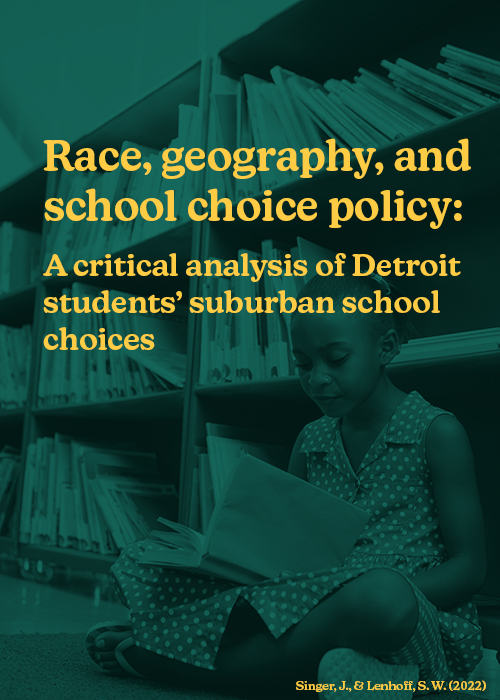
School Climate and Student Mobility
School choice has been accompanied by an increase in student mobility. Although changing schools can benefit students, research has shown that it is often associated with negative student and school outcomes. This study sought to better understand the relationship between school climate and the likelihood of student mobility across K-8 schools in Detroit, a city marked by a high level of school choice options. We found conflicting evidence of a relationship between measures of school climate as measured by the 5Essentials survey and student mobility. We discuss these findings in the context of potential sector differences, which may overshadow parental preferences for organizational characteristics.

The Potential for Improvement Science and Research Partnerships to Maximize the Policy Relevance of School Improvement Research
Increased demands by policymakers for evidence-based practices and rigorous impact evaluations in education offer researchers an unprecedented opportunity to influence policy. Yet, academic research has an infamous reputation for not addressing the real problems of policy and practice, being difficult to understand, and being slow to adapt to changing circumstances in implementation. The increasing complexity of the educational policy landscape threatens to exacerbate the disconnect between researchers and policymakers. Researchers interested in school improvement cannot be content to describe and critique these processes. This book chapter describes our approach to policy-engaged research partnerships and the role of improvement science in internal and external work processes.
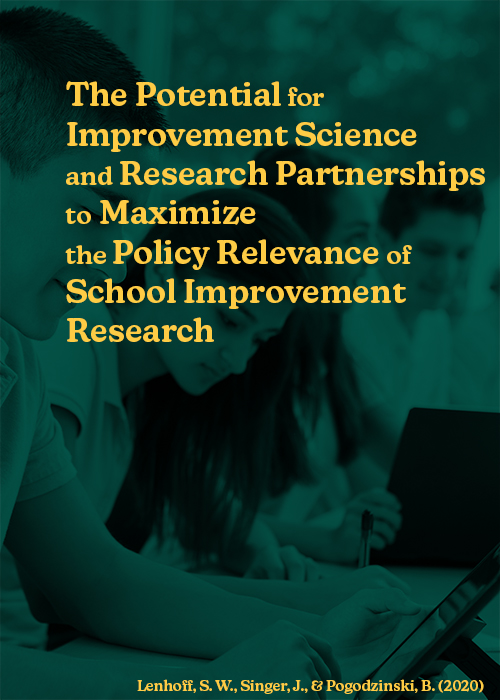
Advancing an Ecological Approach to Chronic Absenteeism: Evidence from Detroit
Drawing on ecological systems theory to study chronic absenteeism, the authors identify the association between student, neighborhood, and school factors and chronic absenteeism in Detroit, as well as between macro-level structural and environmental conditions and city-wide chronic absenteeism rates in large U.S. cities. The authors’ findings suggest the need for coordinated, ecosystemic policy interventions that address structural and environmental barriers to attendance along with school-based efforts that more immediately support students and their families.
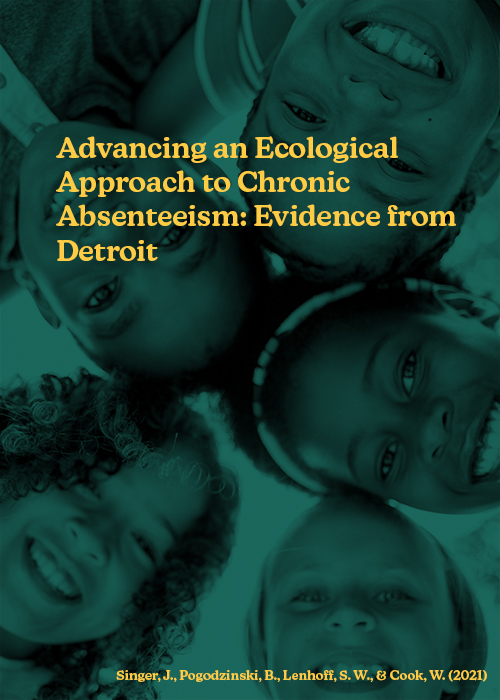
A Collaborative Problem-Solving Approach to Improving District Attendance Policy
Collaborative problem-solving research approacheshave the potential to support improvement in educational policy and practice beyond instruction, by facilitating the development of a shared understanding of complex problems and creating social structures where district, community, and research partners can work together to solve them. This study investigates how findings from a developmental evaluation of a district attendance initiative were incorporated into the initiation process of a networked improvement community to create a shared narrative about how members conceptualized the problem of absenteeism and how they should adapt their levers to better align to that problem. The developmental learning process created an infrastructure within which district leaders and community partners could develop a partnership culture that facilitated change in policy. This study suggests the need to revisit the assumptions that have driven non-instructional improvement efforts and highlights the potential of collaborative problem-solving to strengthen the implementation of district reforms.

Unregulated Open Enrollment and Inequitable Access to Schools of Choice
In severing the link between residential address and school assignment, school choice policies have the potential to decrease school segregation and increase educational equity. Yet, this promise is undermined when school choice creates greater opportunity for those who are already privileged while limiting access to students from historically marginalized groups. This study combines data from a new survey of local open enrollment policies in Metro Detroit, student-level administrative records, and geographic data to critically analyze the local discretion provided in Michigan’s interdistrict school choice policy in relation to the goals of access to schools of choice, desegregation, and educational equity. I find that local school districts implement provisions of state policy in ways that restrict access to Black and economically disadvantaged students while creating pathways of opportunity for others. Districts are incentivized to implement these restrictions because of the inequities built into the state school funding formula and the racialized geography of Metro Detroit that is mechanized in district and county boundaries to restrict access. This study has implications for the regulation of local school choice markets and the role they play in increasing equitable public school opportunities.

The Potential for Multi-Site Literacy Interventions to Reduce Summer Slide Among Low-Performing Students
Despite the evidence that summer learning loss or “slide” can have devastating cumulative effects on student performance in school, there are few examples of system-wide interventions that can prevent summer learning loss at scale in urban contexts with high rates of low-performing students. This study reports on the first year of a city-wide effort to reduce summer literacy loss in Detroit, Michigan, through a multi-site collaboration between the city Parks and Recreation Department, the local public school district, and several unique program providers. Results from this pilot study suggest that short-duration, high-intensity tutoring may help to prevent learning loss in literacy among a population with high rates of socio-economic disadvantage and low initial performance, regardless of specific program methodologies. This study has implications for other large cities seeking to prevent summer slide by building on existing municipal and district infrastructure.
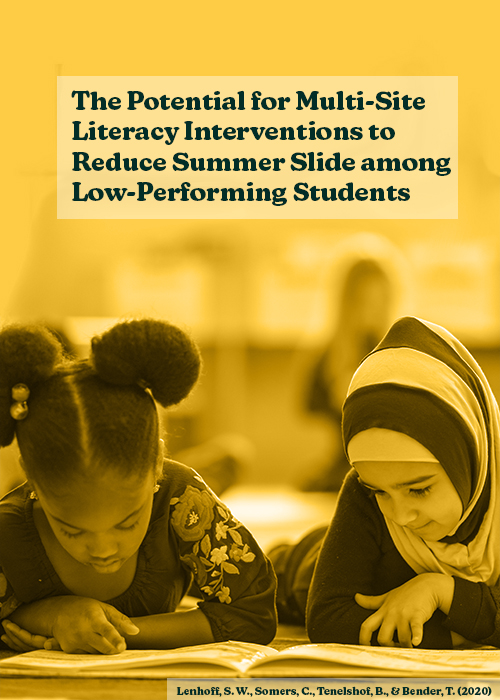
Exiting Detroit for School: Inequitable Choice Sets and School Quality
Research has documented the complexity of parent-decision making within school choice marketplaces, including the ways in which individual preferences, social networks, and geography influence where parents choose to enroll their children in school. Yet, parent choices are constrained by the ways in which these dynamics intersect with existing school characteristics and locations. By constructing unique choice set “landscapes” for 194 Detroit neighborhoods, taking into account where current neighbors attend school in the city, this paper contributes new evidence on the influence of peer enrollment on school choosing, and how peer choice sets differ from students’ nearest schools. We find that parents are responsive to lower quality schools in their choice sets when choosing to exit and that choice set quality varies by race, with Black students having lower quality schools in their Detroit choice sets.
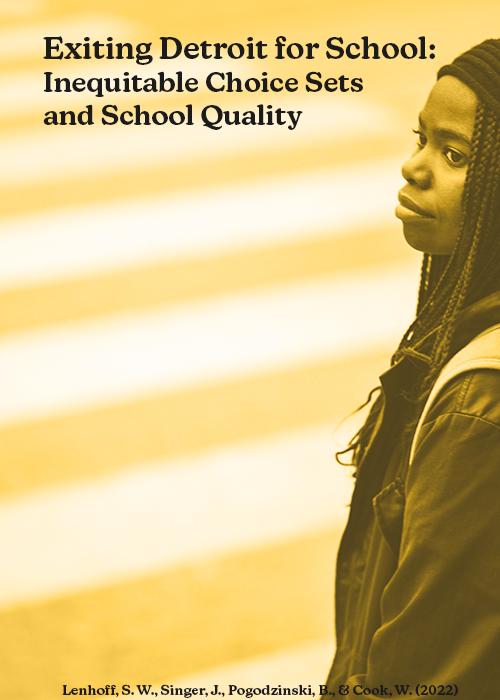
School Organizational Effectiveness and Chronic Absenteeism: Implications for Accountability
Chronic absenteeism in K-12schoolsis strongly associated with critical educational outcomes such as student achievement and graduation. Yet, the causes of chronic absenteeism are complex, with environmental, family/individual, and school factors all affecting the likelihood of a student attending school regularly. This exploratory study examines whether school organizational effectiveness has the potential to moderate external influences on chronic absenteeism. Using school-level scores from the 5Essentials surveys, we find that, in traditional public schools, schools that are organized for effectiveness have lower rates of chronic absenteeism, while controlling for student demographics and grade level. In particular, schools with higher scores for “involved families” have lower chronic absenteeism. While charter schools in Detroit have significantly lower rates of chronic absenteeism than traditional public schools, we did not find an association between organizational effectiveness and chronic absenteeism in charter schools. This suggests that student sorting by school type may produce variation in chronic absenteeism rates that is not moderated by school actions. These findings have important implications for practice and policy, as educators seek to reduce chronic absenteeism in response to pressures from high-stakes accountability systems.
